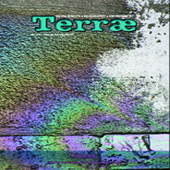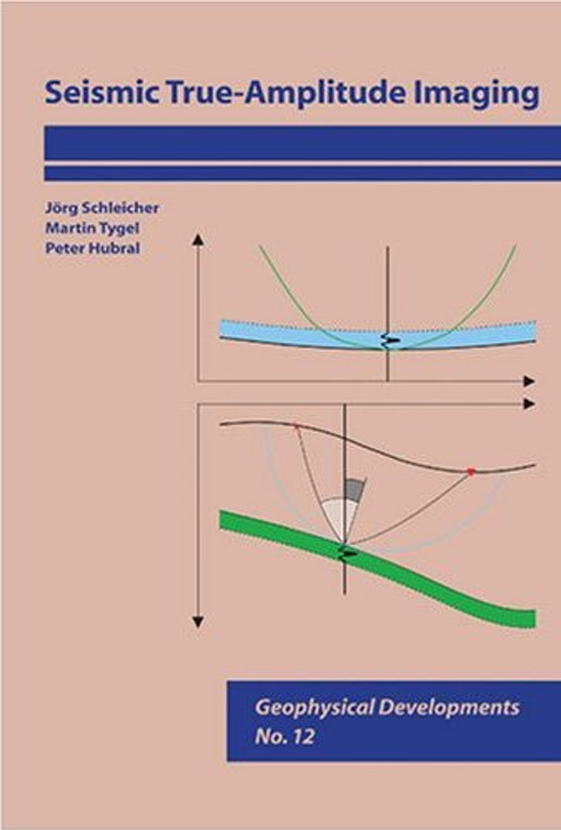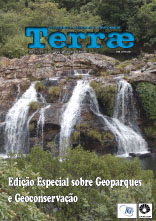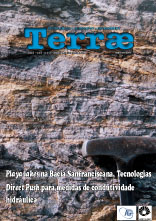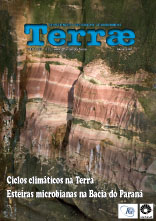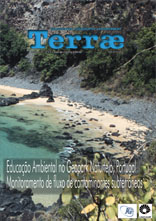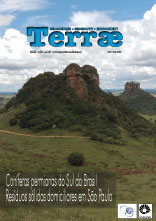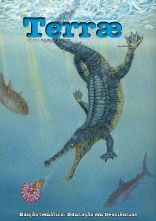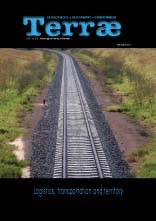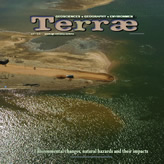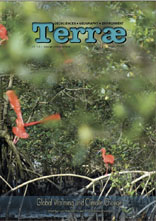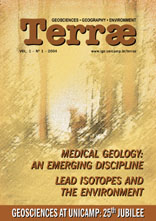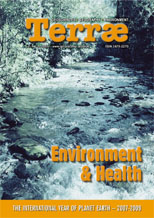Save the date / Call for papers
A revista Terræ publica simultaneamente as edições online de 2016 e 2017. As edições impressas acham-se temporariamente suspensas, pois os editores reconhecem que a internet oferece formas mais eficazes para disseminar rapidamente os resultados das pesquisas. As reformulações do periódico objetivam ampliar a abrangência, combinando redução de custos com rapidez de publicação. Cada vez mais a revista consolida a tendência de cobrir temas multidisciplinares que revelem formas de interação das Geociências com as diferentes áreas do conhecimento humano. A edição de Terræ 2017 é inteiramente dedicada ao tema GEOPARQUES.
A revista aceita trabalhos e comunicações em Português, Inglês e Espanhol.
Chamada de trabalhos / CALL FOR PAPERS
Uma vez recuperado o tempo de ausência na web, a edição de Terræ 2018 tornar-se-á uma boa opção para publicação de artigos científicos. O volume deverá reunir contribuições referentes a GEOÉTICA, tema que permite acomodar abordagens diferenciadas que revelem as inter-relações entre a sociedade e os ecossistemas terrestres.
O sistema de submissão e avaliação de artigos científicos está em pleno funcionamento, sendo feito exclusivamente pelo E-mail: terrae@ige.unicamp.br. Nosso sítio web está à sua disposição.
Esperamos sua visita e participação!
Os editores.
10/01/2018- 16:31 pm
Chamada de trabalhos/ Call for papers para o Volume 15, 2018
Novas contribuições são aceitas para o volume 2018 de Terræ.
Data limite 30.abril.2018
10/01/2018- 16:31 pm
Chamada de trabalhos/ Call for papers para os eventos:
VIII GeoSciEd 2018 – the 8th Quadrennial Conference of the
International Geoscience Education Organisation (IGEO)
– Geosciences for Everyone –
VIII Simpósio Nacional de Ensino e História de
Ciências da Terra / EnsinoGEO-2018
– Geociências para Todos –
Campinas – Sao Paulo – Brazil, July 2018
Acesse o site: http://www.ige.unicamp.br/geoscied2018/en/.
Data limite 11.fevereiro.2018
11/01/2018- 13:40 pm
Livro "Geologia do Brasil”, 2012: Reserve já seu exemplar, sem despesas de remessa.
Visite o endereço eletrônico: www.editorabeca.com.br
Os editores
Campinas, janeiro de 2018.
Seismic True-Amplitude Imaging
Lúcio T. Santos
University of Campinas DMA/IMECC, Campinas, Brazil lucio@ime.unicamp.br
The book provides a comprehensive presentation of Kirchhoff imaging theory, which deals with techniques for the determination of an image of subsurface reflectors from seismic reflections/diffractions. The text is based on the authors’ extensive academic experience on both seismic imaging algorithms and ray-theory methods.
In the first part of the book the authors develop the mathematical basics of zero-order ray theory, the fundamentals of paraxial ray theory, and some duality theorems relating the diffraction time and isochron surfaces. The second part is dedicated to presenting and exploring the unified approach to the seismic-reflection imaging problem: the Kirchhoff migration (diffraction) and demigration (isochron) stack integrals. These two operators can be chained to create new methods to solve a very large class of target-oriented seismic-imaging problems, e.g., migration to zero-offset, configuration transformations, redatuming and remigration. Central to this unified approach is the concept of weighted stacks, where the weights are determined so that the geometric-spreading factors of primary reflections are adequately taken into consideration: True-amplitude imaging, as indicated in the title.
“Seismic True-Amplitude Imaging” is organized into nine chapters: Introduction, Description of the Problem, Zero-Order Ray Theory, Surface-to-Surface Paraxial Ray Theory, Duality, Kirchhoff-Helmholtz Theory, True-Amplitude Kirchhoff Migration, Further Aspects of Kirchhoff Migration, and Seismic Imaging. It also includes references, nine appendices, a list of symbols and abbreviations, and an index. At the end of every chapter there is a brief summary of the developed topics.
The book is written in a highly readable style and contains helpful figures to illustrate concepts throughout the text. The comprehensiveness of coverage regarding the basic principles of Kirchhoff-type imaging and its kinematic and dynamic aspects ensures the appeal of the book to academic and science audiences. It will make a great reference for the researcher and a source of interesting problems for the professor teaching a graduate course in seismic imaging.
A PDF reader is required to view the article files. Make the download here: Adobe Acrobat or Foxi


